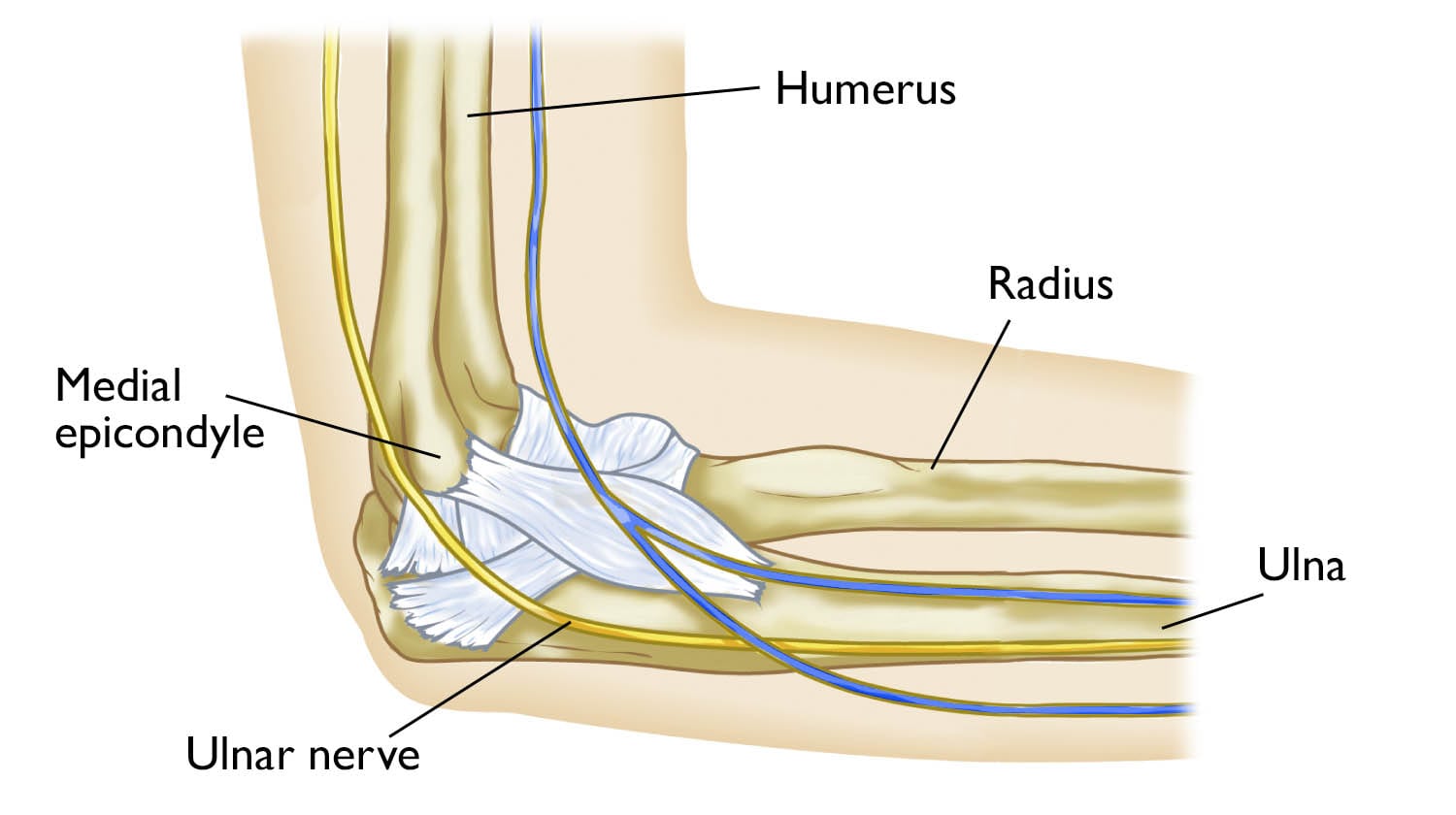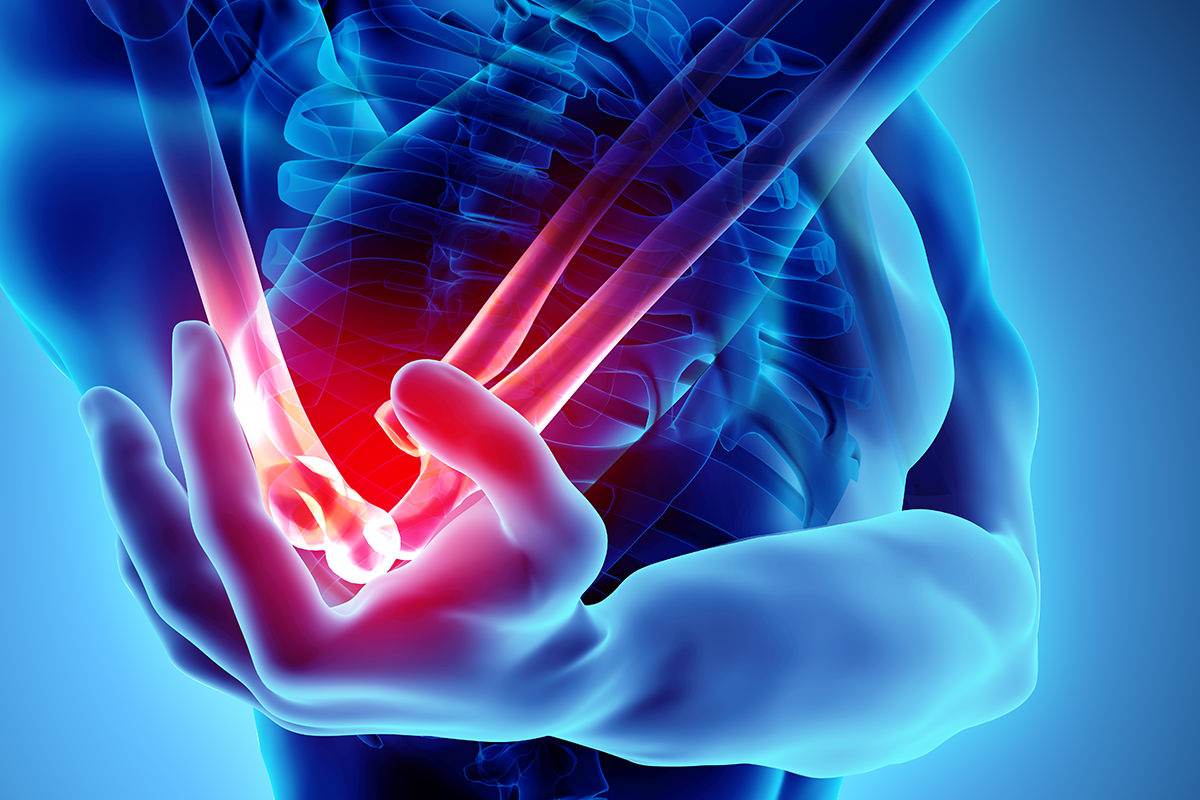Cubital Tunnel Syndrome Patient Education
Cubital Tunnel Syndrome
Cubital tunnel syndrome, also known as ulnar nerve entrapment, occurs when the ulnar nerve is compressed in the cubital tunnel, causing inflammation, swelling, and lack of function in your ring and little fingers or inside elbow pain.
The ulnar nerve travels from your neck to your hand. It is responsible for most of the hand muscles used in fine movements and forearm muscles needed for a strong grip. It also gives feeling to half your ring finger and your little finger.
The cubital tunnel is a group of muscles, ligaments, and bone located under the medial epicondyle of the humerus at the elbow joint. The ulnar nerve is closer to the skin and less protected in this area so it is more prone to bumping or squeezing. Most people think the medial epicondyle is the “funny bone” but it’s actually the ulnar nerve that causes that sensation when hit.
What Causes Cubital Tunnel Syndrome?
Oftentimes, the cause of cubital tunnel syndrome is unknown because the ulnar nerve is vulnerable to compression at the elbow and has little soft tissue protection.
Common causes and risk factors of ulnar nerve compression and injury include:
- Repeated bending or keeping your elbow bent for long periods of time (like when sleeping or holding a phone).
- Direct blows to the “funny bone” area.
- Fluid buildup in the elbow.
- Intense physical activity using the elbow (like baseball pitchers).
- Leaning on the elbow for long periods of time (especially on hard surfaces).
- Previous elbow fractures or dislocations.
- Bone spurs of the elbow.
- Arthritis in the elbow.
- Cysts near the elbow.
- Swelling of the elbow joint.
Symptoms of Cubital Tunnel Syndrome
While elbow-related symptoms of cubital tunnel syndrome consist of aching pain or numbness on the inside of the elbow, most symptoms are experienced in the hand and include:
- Numbness and tingling in the ring and little fingers.
- Numbness and tingling at night.
- Sensation of the ring finger and little finger falling asleep and difficulty moving them in and out.
- Difficulty pinching the thumb and little finger.
- Weakened grip strength.
- Hand pain.
- Muscle wasting in the hand.
- Claw-like deformity of the hand.
Surgical and Non-Surgical Treatments for Cubital Tunnel Syndrome
In most cases, cubital tunnel syndrome is treated without surgery to relieve ulnar nerve pressure at the elbow. Surgical treatment may be recommended if the nerve compression has caused a lot of muscle wasting.
Surgical Treatments for Cubital Tunnel Syndrome
Cubital tunnel syndrome surgeries are outpatient procedures that include:
- Cubital Tunnel Release – the ulnar nerve is cut and divided to increase the size of the cubital tunnel and relieve pressure on the nerve. Cubital tunnel release works best when nerve compression is not severe and the nerve does not slide out from behind the medial epicondyle when the elbow is bent.
- Ulnar Nerve Anterior Transposition – the ulnar nerve is repositioned from behind the medial epicondyle to a new place in front of it. This prevents the nerve from getting caught on the bony ridge of the medial epicondyle when the elbow is bent. This new location may be under the skin but on top of the muscle (subcutaneous transposition), within the muscle (intermuscular transposition), or under the muscle (submuscular transposition).
- Medial Epicondylectomy – part of the medial epicondyle is removed to prevent the nerve from sliding over and getting stuck on the bony ridge of the medial epicondyle when the elbow is bent.
Non-Surgical Treatments for Cubital Tunnel Syndrome
- Rest
- Nonsteroidal anti-inflammatory drugs like ibuprofen and naproxen
- Bracing or splinting at night to keep the elbow straight while sleeping.
- Nerve gliding exercises to help the ulnar nerve slide through the cubital tunnel at the elbow and the Guyon’s tunnel at the wrist.
- Steroid injections
- Wearing elbow pads to reduce irritation from hard surfaces.



